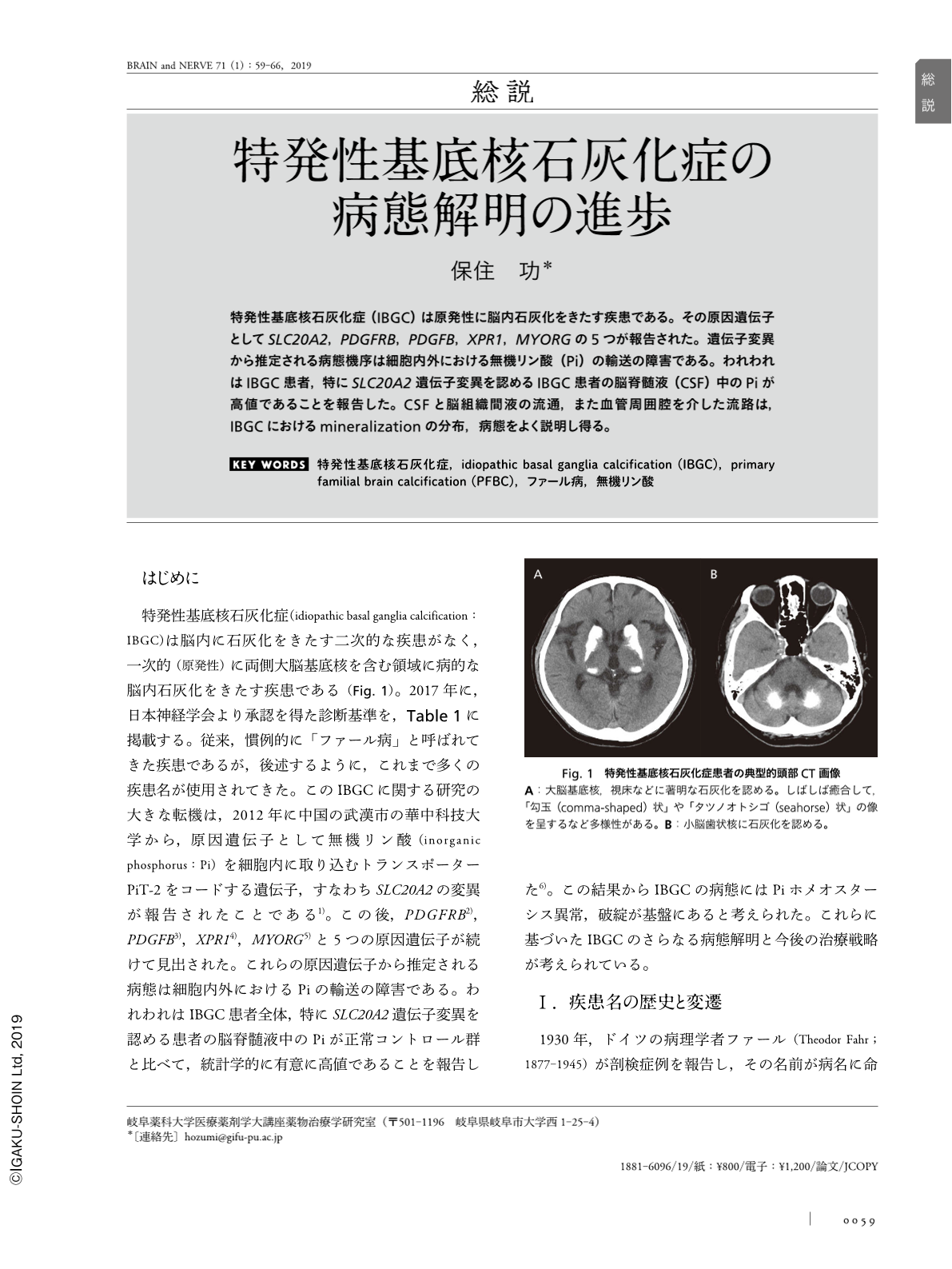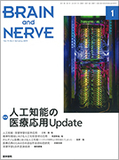Japanese
English
- 有料閲覧
- Abstract 文献概要
- 1ページ目 Look Inside
- 参考文献 Reference
特発性基底核石灰化症(IBGC)は原発性に脳内石灰化をきたす疾患である。その原因遺伝子としてSLC20A2,PDGFRB,PDGFB,XPR1,MYORGの5つが報告された。遺伝子変異から推定される病態機序は細胞内外における無機リン酸(Pi)の輸送の障害である。われわれはIBGC患者,特にSLC20A2遺伝子変異を認めるIBGC患者の脳脊髄液(CSF)中のPiが高値であることを報告した。CSFと脳組織間液の流通,また血管周囲腔を介した流路は,IBGCにおけるmineralizationの分布,病態をよく説明し得る。
Abstract
Idiopathic basal ganglia calcification (IBGC), which is also called Fahr's disease or recently referred to as primary familial brain calcification (PFBC), is an idiopathic and intractable disease characterized by abnormal deposits of minerals including calcium in the basal ganglia and other brain regions such as the thalamus and cerebellum. Mutations in SLC20A2, PDGFRB, PDGFB, XPR1, MYORG have been reported in the past several years. The pathophysiological basis presumed by the genetic studies is the impairment of the transport of inorganic phosphate (Pi) into and out of cells in the brain. We reported high levels of Pi in the cerebrospinal fluid (CSF) of IBGC patients, especially in IBGC patients with SLC20A2 mutations. The flow of Pi between the CSF and interstitial fluid (ISF) in the brain and the drainage flow through the perivascular space in the perivascular drainage pathway can explain the distribution and pathology of mineralization in IBGC. Thus, it is very important to further elucidate the pathophysiology of IBGC and consequently develop pharmacological agents based on the pathophysiology of IBGC in the near future in order to benefit patients with IBGC and their families.

Copyright © 2019, Igaku-Shoin Ltd. All rights reserved.


